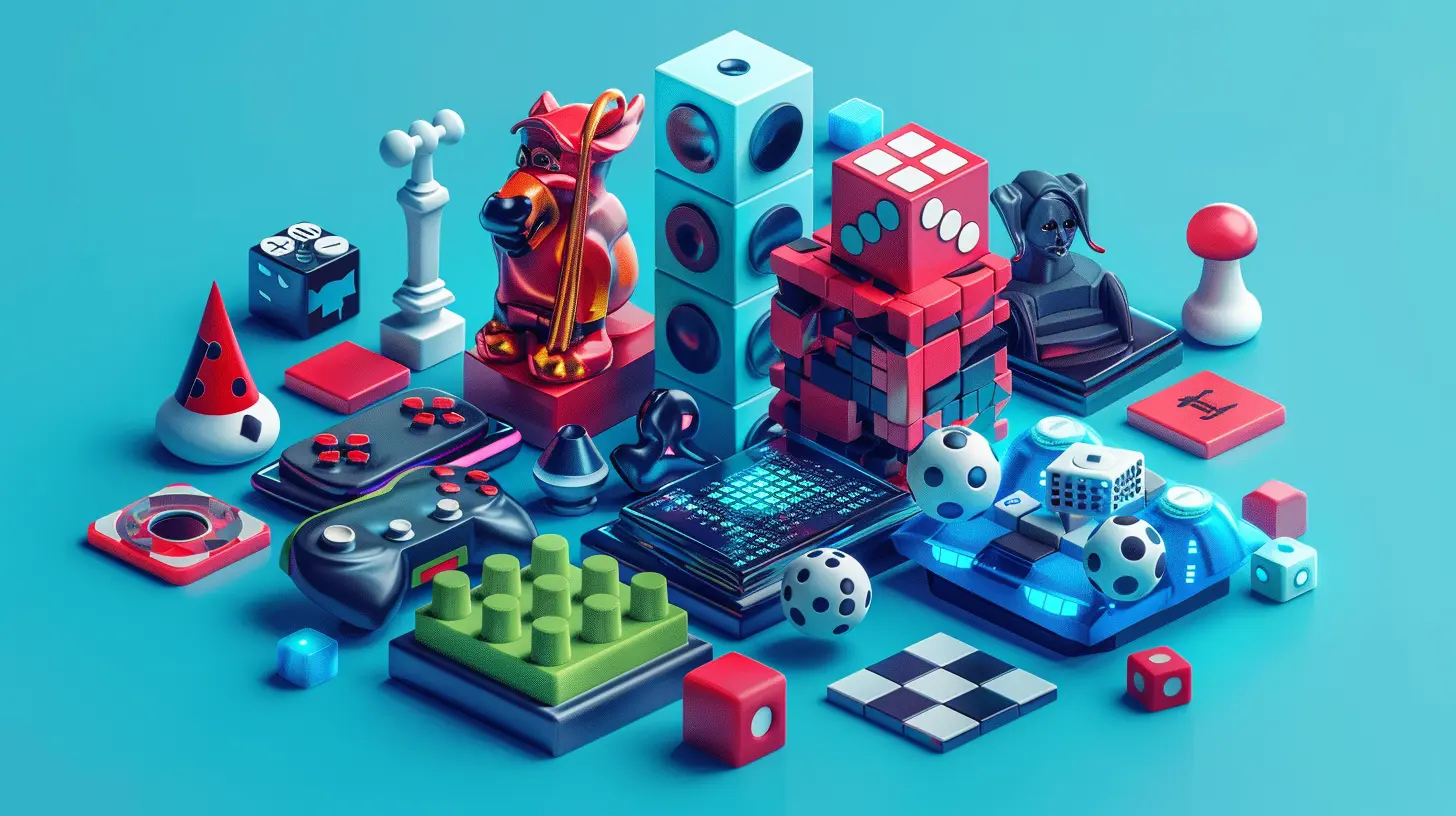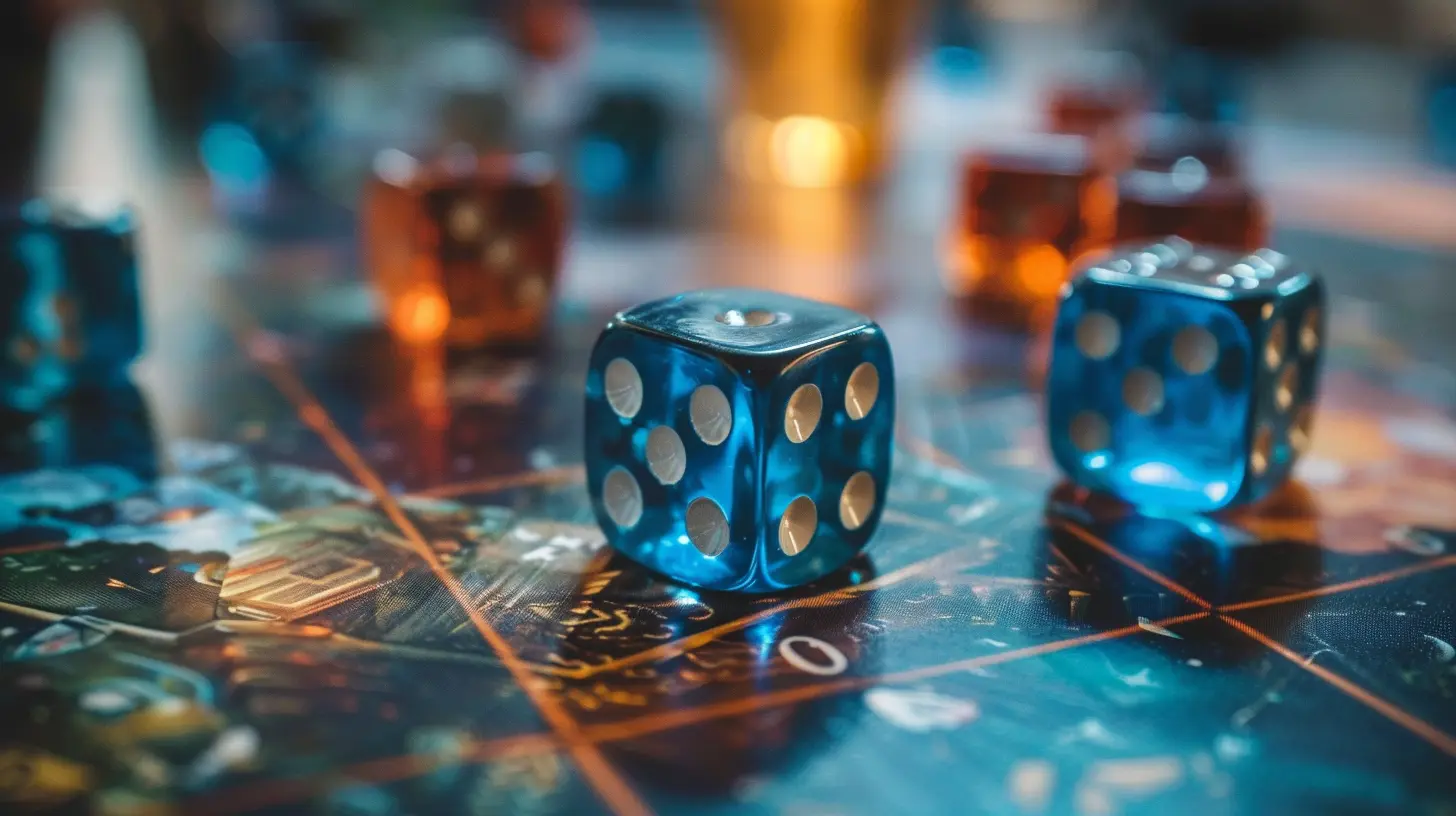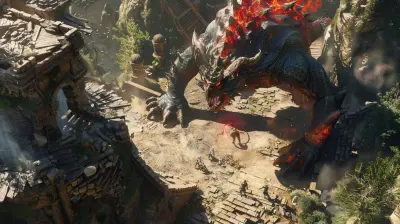How Casual Games Have Become a Social Phenomenon
5 July 2025
Let’s take a quick trip down memory lane. Remember when games used to mean bulky consoles, complex controls, and hours of commitment? Now, just about anyone, from teens to grandmas, is flinging birds at pigs, matching colorful candy, or growing virtual crops—all with just a swipe or a tap. Casual games have taken the world by storm. But here’s the million-dollar question: How did these bite-sized games become such a massive social phenomenon?

Casual Games: Not Just Time Fillers Anymore
At first glance, casual games might seem like tiny distractions—digital chewing gum for the brain. But dig a little deeper, and you’ll see that they’re shaping social interactions, building communities, and even influencing how we think and feel. Pretty wild for a game you play on the bus, right?So, what exactly are casual games? Think of games like Candy Crush, Among Us, Angry Birds, or even Wordle. These are the kinds of games that don’t require tutorials the length of a college textbook. They’re intuitive, engaging, and most importantly—accessible to almost everyone.

The Simplicity That Hooked Millions
Let’s be real—life is hectic. Between work, responsibilities, and trying to stay sane, who has time to dive into a 100-hour RPG just to unwind? Casual games offer that quick dopamine hit without the mental drain.They’re easy to understand. You don’t need to be a pro gamer. Heck, you don’t even need to call yourself a gamer. Tap here, swipe there, watch colors explode—it’s instant satisfaction. That simplicity? It's the secret sauce.

Smartphones: The Game-Changing Game Console
Here’s a stat that might blow your mind: over 6.8 billion people own smartphones. That means billions of potential players walking around with powerful game devices in their pockets. Unlike traditional gaming, where you needed consoles and dedicated setups, casual games come to you—whenever, wherever.Waiting in line at the coffee shop? Launch a few colored balls. On a lunch break? Solve a word puzzle. Casual games have transformed what "free time" means.

Social Games for a Social World
This is where things get interesting. These games aren’t just single-player pastimes anymore. They’ve morphed into platforms for connection.Think about games like Words With Friends, where fun turns into friendly competition. Or Among Us, where you’re laughing (or accusing) your way through intergalactic betrayal with your buddies. Even games like Pokémon GO get players off the couch and into the real world—meeting new people, joining events, and forming local communities.
How cool is that? A game that literally brings people together in the physical world. It’s gaming going full circle—from couch-bound to crowd-sourced.
Viral Mechanics: Built to Be Shared
Ever wonder why you keep getting game invites from friends? Love it or hate it—it’s genius. Casual games are built to be social. Many use mechanics that encourage (or bribe, let’s be honest) players to invite others.Need more lives? Ask a friend. Want extra bonuses? Get someone to join. Before you know it, you’ve pulled your cousin, coworker, and even your boss into your farming simulator.
These games don’t just go viral because they’re fun—they’re designed to spread like wildfire.
The Rise of the “Non-Gamer” Gamer
This might be the most fascinating twist in the casual gaming saga. Back in the day, gaming was a niche. If you were into it, you were a “gamer.” Now? Everyone’s playing something.You don’t need a gamer tag or Twitch stream. If your mom plays Candy Crush, she’s a gamer. If your friend is obsessed with word puzzles? Gamer. It’s a label that’s lost its exclusivity—and that’s a good thing.
Casual games have democratized gaming. They’ve blurred the lines and opened the doors wide for everyone to join the party.
Gaming as a Mental Health Break
Okay, this one’s important. Casual games aren’t just time-wasters. For many, they’ve become a daily ritual—a mental reset button. A little escape from stress, chaos, and the never-ending to-do list.Popping bubbles, lining up colors, solving tiny puzzles—it’s therapeutic. Plus, the feeling of progress (even if it’s just leveling up in a game) can be incredibly uplifting. When life feels out of control, a little digital win goes a long way.
Influencers, Streamers & TikTok: Casual Goes Viral
What happens when you mix casual gaming with social media? BOOM—instant virality.TikTokers create content around their favorite mobile games. Streamers challenge their audiences with impossible puzzle levels. Even major celebrities casually show off their high scores. This visibility fuels interest and keeps these games relevant.
Remember the Wordle craze? It wasn’t just about the game—it was about sharing your result grid with friends, comparing streaks, and feeling part of something bigger.
Monetization Without the Price Tag
Here’s the kicker—most casual games are free. You don’t need to spend a dime to enjoy them. But if you want that super exclusive power-up or an extra life? That’s where microtransactions come in.It’s a brilliant model. Keep the entry barrier low but offer optional upgrades. And because the games are so addictive, players often don't mind dropping a buck or two. It’s like tipping a street performer—you’re paying for the good vibes.
Cultural Crossovers: When Games Meet Real Life
Casual games have begun bleeding into pop culture. They inspire memes, appear in TV shows, and even shape how we talk.Raise your hand if you’ve heard someone say “sus” because of Among Us. Or joked about rage-quitting a level in Candy Crush. These aren’t just games, they’re cultural touchpoints. Shared experiences that millions of players instantly relate to.
A Breeding Ground for Creativity
Here’s the other side of the coin. Casual games don’t just serve players—they’re also a creative playground for developers.With lower production costs and experimental mechanics, indie devs can test wild ideas. Some of these games break records. Others inspire the next wave. Casual gaming is filled with innovation, breathing fresh air into the entire industry.
Education? Therapy? Fitness? Yep, Casual Games Do That Too
We’ve talked about fun and connection. But casual games are also sneaking into spaces you wouldn’t expect—like education, therapy, and even fitness.Think math-based puzzle games that help kids improve arithmetic. Or brain-training games used by therapists to improve cognitive function in older adults. Even apps like Zombies, Run! turn workouts into immersive, gamified experiences.
Casual games are more than entertainment—they're tools.
The Future of Casual Gaming: Where Do We Go from Here?
Now that we’re deep into the rabbit hole, where is this all heading?Expect more social integration. Think live-streamed mobile games, real-time multiplayer word battles, or even AR/VR mashups that blend your living room with a game.
AI-powered opponents and adaptive levels might personalize the experience further. And with the lines between gaming and social life disappearing, we might not even call them "games" anymore—just “experiences.”
Final Thoughts: Casual, Yet Unstoppable
So, how did casual games become a social phenomenon?Simple—they did what few other mediums could. They crossed barriers. They made gaming human, social, accessible, and fun. They showed us that a game doesn't need to be epic in scale to have an epic impact on our lives.
And while the graphics might be cute and the gameplay simple, the effects are anything but. Casual games are changing how we interact, how we unwind, and how we connect—with friends, family, and even strangers across the globe.
So next time you crush some candy or spell a tricky word, remember—you’re not just playing a game. You’re part of a global movement.
all images in this post were generated using AI tools
Category:
Casual GamesAuthor:

Lucy Ross
Discussion
rate this article
2 comments
Dixie Rocha
Casual games: fun contagion!
November 11, 2025 at 4:30 PM

Lucy Ross
Absolutely! Casual games have created a vibrant social connection, turning play into a shared experience that enhances enjoyment and fosters community.
Olivia Conrad
Great insights! Casual games truly foster connection and community among players in today’s world.
July 8, 2025 at 2:28 AM

Lucy Ross
Thank you! I’m glad you found the insights valuable. Casual games really do play a pivotal role in connecting players and building communities.


